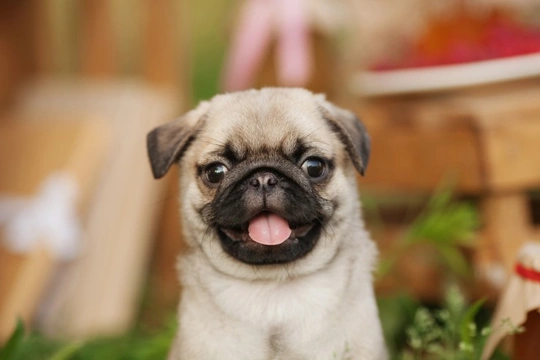
Reverse sneezing in pugs
Pugs are one of the most popular dog breeds in the UK – in third place overall out of a total of 241 different dog breeds and types, so it is fair to say that they’re pretty common, and lots of people own one! However, the pug is also a dog breed that can be prone to a reasonably large variety of different health conditions and problems, which may not always become apparent to their owners until they are a few years old.
This means that it is vital for pug owners and prospective pug puppy buyers to research the breed’s health and most common challenges, in order to recognise the signs of a potential problem and where possible, avoid it.
One health condition that can be found within the pug breed is reverse sneezing, and this is a specific type of respiratory anomaly that can cause affected dogs to go through bout of reverse sneezing fits, which can often be loud and explosive-sounding and quite alarming for the dog’s owner!
In this article we will look at reverse sneezing in the pug in more detail, covering the symptoms of the condition and why it occurs. Read on to learn more about pugs and reverse sneezing.
What is reverse sneezing?
Reverse sneezing is exactly what it sounds like – a sneeze in reverse. Normally when we sneeze, we rapidly expel air from our lungs, but reverse sneezing occurs when air is rapidly drawn into the lungs instead.
The scientific name for reverse sneezing is paroxysmal respiration, and if you witness reverse sneezing in your own pug, you will immediately be able to tell the difference between it and a normal sneeze.
When a pug reverse sneezes, it is much louder than a normal sneeze and often sounds as if the dog is choking on something, and the effect is made more acute by the fact that reverse sneezing often happens quickly with no warning and may involve multiple sneezes. Fits of reverse sneezing are normally over quickly too, and your dog will be perfectly fine afterwards.
Why do some pugs suffer from bouts of reverse sneezing?
We don’t know for sure why dogs of any type may be prone to bouts of reverse sneezing, nor why the pug is one of the breeds that seems to be more likely to exhibit this issue than others. However, the flattened, brachycephalic face of the pug, combined with a short airway and muzzle and often, excess fat around the neck, almost certainly contribute to it.
Allergies and irritations of the airways are the two factors most likely to lead to the onset of a bout of reverse sneezing in the pug, as this can make your dog feel as if they have something stuck in their nose, throat or sinuses that irritates them, so that their bodies generate a reverse sneeze to try to clear the obstruction.
Getting to know the signs of reverse sneezing in the pug is important for all pug owners, as the condition’s symptoms are easily confused with a more serious condition called tracheal collapse, which pugs are again rather more prone to than most.
Is reverse sneezing harmful to my pug?
First of all, if you have witnessed your pug having a reverse sneezing fit or displaying symptoms that might indicate that reverse sneezing is happening, it is important to get them checked out by your vet. This is so that your vet can examine your pug and ensure that the issue is indeed reverse sneezing, and not something else like tracheal collapse as we mentioned above.
Additionally, your vet can help you to work out if an allergy or irritation is causing the reverse sneezing, and provide options for managing this and bringing it under control.
However, while reverse sneezing can be pretty weird to witness – and often shocks pug owners when they first see and hear it and don’t know what is going on – it is not a major issue and doesn’t indicate something huge or harmful wrong with your dog.
Some pugs will be prone to going through bouts of reverse sneezing regularly for the duration of their life, others just occasionally, and still others just once or twice in total.
In terms of what you should do if you see your pug reverse sneezing, the best answer is to simply leave them alone – there’s nothing that you can do to stop an attack, it won’t harm your dog, and will almost certainly be over quickly.
However, you might want to monitor and record your dog’s attacks, noting down the dates, times, duration of the attacks and how severe they are. This will allow you to build up a picture and potentially identify any patterns of triggers, which can be useful info for your vet.
If your pug’s reverse sneezing fits seem to be becoming more acute, more frequent, or distress your dog, again, talk to your vet about this and ask them to investigate further.



